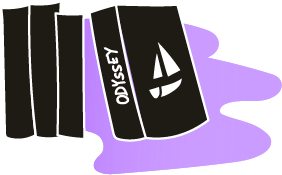Title of the resource
Title of the resource in english
Publisher
Usborne Publishing
Original language
Target and Age Group
primary school (9+)
Author of the Entry:
Marta Pszczolińska, University of Warsaw, m.pszczolinska@al.uw.edu.pl
Peer-reviewer of the Entry:
Elżbieta Olechowska, University of Warsaw, elzbieta.olechowska@gmail.com
Second Peer-reviewer of the Entry:
Ayelet Peer, Bar- Ilan University, ayelet.peer@biu.ac.il
Angela Wilkes
Angela Wilkes is a writer and editor, author of several books focused on education aimed at children and parents. She presents information in an original and straightforward way. Her long list of titles spans a diverse range of topics including The Children's Step-by-Step Cookbook, My First Word Book, My First Body Book, My First Nature Book, Simple Science, The Big Book of Dinosaurs or The Best Book of Ballet. Part of her interest includes publications for foreign languages learning, such as Welsh for Beginners, Irish for Beginners, Latin for Beginners, Italian for Beginners, Spanish for Beginners, Everyday Words in Spanish, French for Beginners, Picture Dictionary in French, One Hundred and Fifty-First French Phrases, Picture Dictionary in German etc.
Contents & Purpose
Latin for Beginners is a textbook aimed at primary school pupils. The author treats Latin as any other foreign language and uses the same comprehensive methods as for teaching modern languages at the beginner level. This includes introducing new vocabulary and grammar in each chapter along with puzzles, quizzes and exercises to consolidate new knowledge. It also suggests the use of an associated website for additional resources and activities to aid the learning process, but notes that the book is a full and informative course on its own.
Each topic presented on a two-page spread touches on an essential linguistic skill, which includes, for example, saying ‘hello’ and ‘goodbye’, introducing oneself, telling where one’s from, talking about things around the house, foods, colours, members of family, one’s hobbies, naming months and seasons of the year etc. New vocabulary and phrases are presented in comic-like representations of situations when one could use the newly learned phrases, which makes them easier to remember and introduces their use in conversation. There are sections devoted to learning how to communicate in important situations like asking directions, telling the time, arranging meetings, going shopping, ordering meals or drinks etc. To aid the use of vocabulary in shorter expressions and sentences, explanations of relevant grammatical concepts are provided in designated boxes.
The glossaries, comics and grammar sections are interspersed with engaging quizzes and exercises as well as Internet links for more activities relevant to each section.
Towards the end of the book there are also answers to quizzes, a grammar tables spread and a consolidating vocabulary, making the textbook appropriate for self-study.
While the textbook evokes Antiquity mainly through teaching the Latin language, it informs its users in the introduction that Latin was the language of the Ancient Romans and describes some of the ancient roots of Latin. It is done through a few descriptions of how Romans used to speak Latin, for example in a footnote stating that Romans did not use capital letters to begin a sentence or by some references to how they lived, e.g., explaining what coins Romans used (dupondius, sestertius, denarius etc.) or how they divided the day differently from us. This is especially visible in a dedicated section at the end of the book, which outlines how Romans divided the daylight into hours of differing length depending on the time of year and describes how the names of months come from those that Romans used and how the calendar looked after the time of Julius Caesar. It also introduces specific days of the month (e.g., kalends, nones, ides). Such use of historical and cultural curiosities and demonstration of influence of Latin on today’s language is a great way of showing how interesting Latin is.


